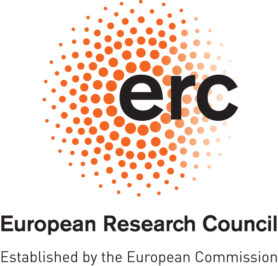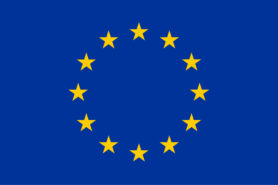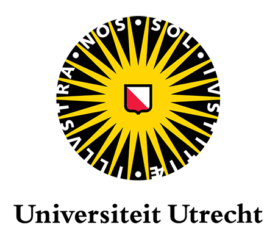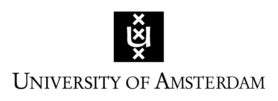Events
Registration now open for International Conference ‘The Making of Art Expertise’ – 8-10 May, Utrecht and Amsterdam
Organisation: Sven Dupré, Jenny Boulboullé, Jill Briggeman, Esther van Duijn and Mariana Pinto
Institutions: Utrecht University, University of Amsterdam, NICAS and Rijksmuseum
Registration is now open!
Please register through an email to j.briggeman@uu.nl, stating your name, affiliation, and which day(s) you want to attend the conference (-and, if applicable, your preferred choice of thematic session on Thursday 9 May – before April 30th). There is no cost of attendance, but space is limited and registration is on a first-come-first-served basis. You can register for the full conference, or for just one or two day(s). Tea and coffee will be provided in the morning and during breaks. Lunch is not included, however there are numerous café’s in the local area around both venues.
DOWNLOAD THE FULL PROGRAMME HERE
DOWNLOAD ALL ABSTRACTS HERE
This conference focuses on the development of a science-based conservation practice and the emergence of art history as a ‘science of art’ (or Kunstwissenschaft) in the nineteenth and twentieth centuries (1850-1950). New approaches were developed to address technological aspects of ancient artefacts and Renaissance art works based on philological and chemical research that complemented and challenged traditions of connoisseurship. Grounding the technical analyses of art works within scholarship of historical source texts and scientific analyses went hand in hand with attempts to claim a position for art history within the emerging disciplinary landscape of university taught sciences (Wissenschaften). In addition, new editorial series and journals appeared that were devoted to past and present technologies in the arts or to art technological source research (e.g. Technische Mitteillungen, Wiener Quellenschriften). Assessments were conducted by committees whose members represented diverse and changing fields of expertise, including artists, chemists, collectors, museum professionals and administrators, while collaborations between conservators and chemists also helped in the decision-making process for the conservation treatments of deteriorated objects. The establishment of museum laboratories in the late nineteenth and early twentieth centuries had an influence in the professionalization of conservation as a discipline. How was knowledge in conservation transmitted? How did developments in science and technology impact teaching in art history and conservation? And which scientific methods were used for the study and teaching of art history? This conference investigates emerging cultures of expertise in the period between 1850 and 1950 and the collaborations and conflicts between conservators, chemists and art historians, to understand who was considered an expert in the arts, and for which reasons. It sheds new light onto the disciplinary formation of art history and the professionalization of conservation.

Wednesday 8 May
(Belle van Zuylen Room, Academiegebouw (Utrecht University Hall), Dom Square, Utrecht)
Session I – Science & Conservation (Chair: Sven Dupré, Utrecht University and University of Amsterdam)_________________________________________________________________________
- Marco Cardinali, University of Genoa: ‘Rome 1930-1939. Art History, Science and Conservation from the Conference on the Scientific Analysis of Artworks to the Founding of the Istituto Centrale del Restauro’.
- Geert Vanpaemel, KU Leuven: ‘Art Criticism from a Laboratory? Bold Beliefs and Contested Claims’.
- Uta Kornmeier, Leibniz-Zentrum für Literatur- und Kulturforschung, Berlin: ‘Seeing through the Old Masters. Radiography as Art Expertise’.
- Kathrin Kinseher, Akademie der Bildenden Künste, Munich: ‘“We Cannot Splash Light onto the Palette”: The 1893 Munich Congress and the Public Demand for Research of Painting Materials’.
- Jacob Simon, The National Portrait Gallery, London: ‘The Influence of Scientists on Picture Conservation and Artists’ Materials in London, 1885-1935’.
Session II – Museums (Chair: Jenny Boulboullé, Utrecht University)_________________________________________________________________________
- Mariana Pinto, Utrecht University: ‘Conservation and Science in The National Gallery London in the Second Half of the Nineteenth Century’.
- Thierry Ford, The National Museum of Art, Oslo: ‘Varnishing Munch. Revisiting Munch’s Painted Surfaces at the National Museum of Art, Norway’.
- Morwenna Blewett, Worcester College and Ashmolean Museum, Oxford University: ‘From Broad Street to Beaumont Street at the Crossroads of a New Century: Conservation and Collections Care at the “Old” and “New” Ashmolean Museums’.
- Esther van Duijn, Rijksmuseum, Amsterdam: ‘200 Years of Conservation History of the Paintings Collection of the Rijksmuseum: An Overview’.
- Keynote lecture I – Noémie Étienne, University of Bern: ‘Conservation, Connoisseurship, and Conflict: The Politics and Materiality of Expertise’.
Thursday 9 May
(Conference Room B, Ateliergebouw Rijksmuseum, Hobbemastraat 22, Amsterdam)
Session III – Conservation Histories (Chair: Esther van Duijn, Rijksmuseum, Amsterdam)_________________________________________________________________________
- Esther van Duijn, Rijksmuseum, Amsterdam: ‘200 Years of Conservation History of the Paintings Collection of the Rijksmuseum: Some Words on Sources and Methodology’.
- Maartje Stols-Witlox, University of Amsterdam: ‘Restoration Recipes in the Nineteenth Century: a Role for the Amateur in Caring for Paintings?’
- Emilie Froment, University of Amsterdam: ‘Reconstructing Nineteenth-Century Wax-Resin Linings’.
- Birgit Reissland, The Netherlands Cultural Heritage Agency: ‘The Forgotten St. Gall Conference of 1898 and its Failed Impact on Paper Conservation as an Academic Discipline’.
- Suzan Meijer, Rijksmuseum, Amsterdam: ‘The History of Textile Conservation in the Rijksmuseum’.
Friday 10 May
(Belle van Zuylen Room, Academiegebouw (Utrecht University Hall), Dom Square, Utrecht)
Session IV – Education (Chair: Mariana Pinto, Utrecht University)_________________________________________________________________________
- Francesca Bewer, Harvard Art Museums: ‘Conservation in the Making: Teaching and Training at the Fogg Museum’.
- Marco Ciatti, Opificio delle Pietre Dure, Florence: ‘Conservation and Conservators in Italy: An Historical Review’.
- Anne van Dam, Utrecht University: ‘How and Why Are We to Teach Art History? Debating the Sites and Aims of Academic German Art History at the End of the Nineteenth Century’.
- Andreas Burmester, Doerner Institut, Munich: ‘Heading for a Dead End: Walter Gräff, Alexander Eibner and Max Doerner’.
- Michael vd Goltz, Hochschule für angewandte Wissenschaft und Kunst, Hildesheim: ‘Ways, Aims, Visions, Disillusionments – Education in the Field of Art and Conservation in Germany 1850–1950’.
- Keynote lecture II – Cathleen Hoeniger, Queen’s University, Kingston: ‘Invention as a Necessity: The Salvage of Italian Frescoes during World War Two’.
Session V – Discipline Formation & Cultures of Expertise (Chair: Hanna Hölling, University College London)_________________________________________________________________________
- Caitlin O’Grady, University College London: ‘Mending, Sticking and Repairing: The Role of Expertise at the Intersection of Conservation and Archaeology in the Nineteenth and Twentieth Centuries’.
- Maria Teresa Costa, Max Planck Institute for the History of Science, Berlin: ‘The Disciplinary Formation of Art History Through the Lens of its First International Conferences’.
- Ella Hendriks, University of Amsterdam: ‘From Concierge to First Class Technical Assistant: The Climb of the Restorer J.C. Traas and his Work on the Van Gogh Collection’.
- Hélène Dubois, Royal Institute for Cultural Heritage (KIK-IRPA), Brussels: ‘The Enlightened Interdisciplinarity of the Conservation and Research Campaign of the Ghent Altarpiece in 1950-1951’.
REGISTRATION FOR PARALLEL THEMATIC SESSIONS ON THURSDAY 9 MAY, AMSTERDAM
Please note that all participants need to indicate their preferred parallel thematic session (see full description below) in order of 1 – 4 through an email to Jill Briggeman (j.briggeman@uu.nl) before 30 April. If you have not registered before the deadline, the organization will select a group for you.
- Option 1 – Esther van Duijn, Rijksmuseum, Amsterdam: A smaller group of participants will visit the paintings conservation studio of the Rijksmuseum to look at examples of the different sources that can be used for the study of conservation history. Not all of these sources are archival. The studio also holds a large cabinet with historical materials, such as the hand irons that have been used for decades to carry out wax-resin linings. Additionally, participants will look and discuss some of the paintings in the studio, to see what can be learned from them. Numerous paintings have little or no documentary sources, but that does not mean we cannot learn their conservation history at all. Sometimes the objects themselves are the most important source of information there is.
- Option 2 – Birgit Reissland, The Netherlands Cultural Heritage Agency: Participants will have a closer look at examples of twenty-century paper conservation treatments and examples of degradation phenomena that fueled the debates at the St. Gall conference.
- Option 3 – Emilie Froment, University of Amsterdam: Emilie Froment will show participants some representative samples produced for her PhD research. One series of samples presents reconstructions of various ground types before and after wax-resin impregnation. Other samples examine the impact of the lining method on the degree of colour change. The discussion will focus on the possibilities and limitations in using historically accurate reconstruction for researching colour change in Netherlandish seventeenth century paintings after wax-resin linings.
- Option 4 – Visit to the Rijksmuseum: Participants can visit the Rijksmuseum at their own initiative (and at their own expense).
This project has received funding from the European Research Council (ERC) under the European Union’s Horizon 2020 research and innovation programme (grant agreement No. 648718) and the Rijksmuseum.
Image: ©Nationaal Archief, Van de Poll Collection (1946).





